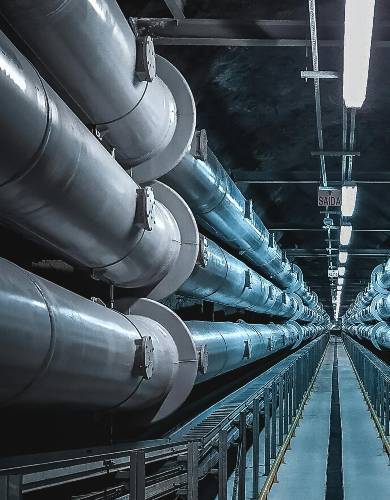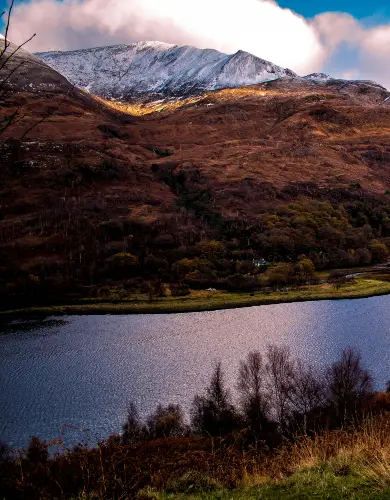Wind farms in the UK
Between 2009 and 2020, electricity generation from wind power in the UK has increased by 715%. With the UK becoming increasingly reliant on wind power, we decided to explore what a wind farm is, how wind farms operate, and the current underlying issues we must resolve as the UK moves into a renewable future.
What is a wind farm?
A wind farm is also known as both a wind power station and a wind power plant. A wind farm is essentially an area with a group of wind turbines used to generate electricity.
Wind farms come in all sizes, but all have the same objective, to generate electricity by using the wind to turn the turbines to create green energy (known as wind energy). These can be located both offshore and onshore.
The biggest wind farms in the UK are owned by business energy suppliers.
How do wind farms work?
In a wind farm, individual turbines extract the wind’s kinetic energy to rotate their blades and generate electricity. A wind farm is essentially multiple wind turbines powered by the wind’s energy to produce electricity collectively.
The rotating blades of each turbine are directly connected to a generator that will convert the energy produced by the rotating blades into electrical energy.
On a windy day in the UK, there is enough electricity produced to power the whole country. When it comes to a still day, with little or no wind, wind farms cannot generate any electricity.
The biggest issue is as there is currently no way to store excess wind power to supplement days when there is no wind at all.
The two types of wind farms are onshore and offshore. Offshore is where wind turbines are built in the sea away from land. Whereas onshore wind farms are placed in a field usually close to the coast, where the wind is at its optimum. But, both generate electricity using the same method.
Current issues surrounding wind farms
Using wind farms as a renewable energy source aims to combat the reliance on fossil fuels and ultimately reduce the UK’s carbon emissions. However, unfortunately, it does come with a few issues that need resolving.
Here we look at some of the pressing issues with wind farms:
Environmental and landscape issues
Wind farms have a relatively low impact on the environment compared to those of fossil fuel-based plants. However, they do cause a few environmental issues.
As the wind farms are large and need to be in locations susceptible to wind, they tend to be built in wild, rural areas causing habitat loss and fragmentation. Another adverse effect on the environment is the wind turbine blades can cause death to birds and bats.
The other issue is related to the local landscape. Unfortunately, to generate a substantial amount of power from wind, you need a lot of wind turbines. These can cover a vast area of land, causing obstruction to the surrounding views and being an eye-sore to locals.
Adverse effects on human health
There is no substantial research to confirm whether or not wind farms have an adverse effect on human health. There have been claims that wind farms have caused a vibroacoustic disease in people who live nearby. However, no scientific research has proven this true or false.
Interference of ground radars
Wind farms can interfere with ground radar systems. The military and air traffic control generally use these to detect aircraft. Due to the rapidly moving blades, the turbines can actually return a signal that could potentially be mistaken for an aircraft. Older systems tend to have the most issues with determining whether an aircraft is flying by.
The issue is that an aircraft flying above the wind farm’s turning blades could become impossible to detect, as the blade tips on the turbine can be moving at nearly aircraft velocity.
Some airports have used the short term fix of “blanking” the wind farms, a solution used in the early 2010s, but as technology advances, some wind farms are starting to use “stealth technology” to block the interference.
Interference of radio reception interference
There have been reports of wind farms interfering with local radio and television reception; this occurs when the direct path between transmitter and receiver is blocked by terrain, causing interferences to both terrestrial and digital signals.
A potential solution is to include predictive interference modelling as a site selection component.
Turbine blades cannot be recycled
Most turbine blades cannot be recycled when replaced, therefore adversely affecting the environment. However, The National Renewable Energy Laboratory (NREL) is researching an approach to manufacturing wind turbine blades, employing a thermoplastic resin system.
The thermoplastic resin blades would be fully recyclable at the end of the turbine’s life.
Benefits of wind farms
As well as the obstacles surrounding wind farms, there are actually plenty of benefits to them. Here we explore the benefits of wind farms.
- Wind farms are a cost-effective alternative to fossil fuels.
- Better for the environment in comparison to fossil fuel plants.
- Wind farms produce a renewable source of energy.
How many wind farms are there in the UK?
The UK currently has 1,500 operational onshore wind farms and 37 offshore wind farms (as of Feb 2020).
What’s Europe’s largest offshore wind farm?
As of the date of this article, the largest wind farm in Europe is in the Thames Estuary. The name of the wind farm is the “London Array”. It has a current capacity of 630MW and is also the world’s largest offshore wind farm.
How did an increase in wind power affect the UK’s power grid?
The National Grid stated in 2020 that it was the “greenest year on record” for the UK, with record-high levels of wind energy generation, but what effect does this have on the power grid?
The main it has on the UK’s power grid is the fluctuating levels of power generated by wind energy.
Wind farms have to have access to transmission lines. This is so they can transport the electricity generated. However, the main effect of wind power on the UK’s power grid is the inconsistent nature of wind in general.
It poses the complication of maintaining a stable grid, as wind is inconsistent, especially if that region is reliant on a substantial amount of wind energy.
The unreliability of wind power means that the national grid remains reliant on gas-fired power stations to meet any gaps in demand. This explains the strong correlation between wholesale electricity and gas prices.
Compare renewable business energy
Use our business energy comparison tool to compare commercial electricity prices and business gas rates. Simply add your postcode into the address finder to begin the comparison.

